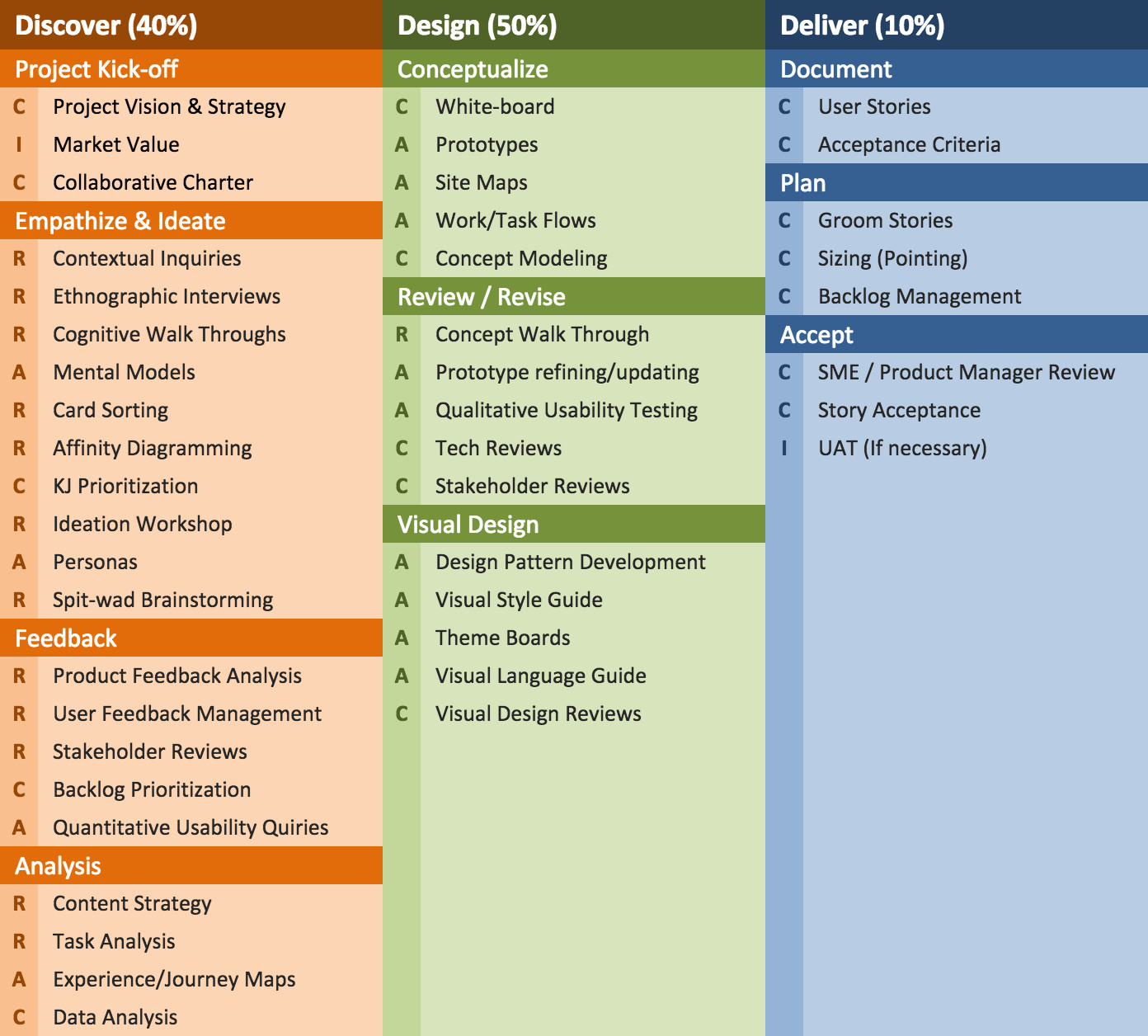
Craig Bachman :: Co-founder
February 16, 2016... 4min read
ArticleThe Agile Experience Strategist
The Agile Experience Strategist can be the new UX Team of One – Leah Buley mentions in her book "The User Experience Team of One". Integrating a hybrid version of Lean Experience Framework and traditonal user research processes will help key stakeholders and budget providers make better choices in how their products and software applications are designed and built.

Being the User Experience Team of One
A UX team of one is someone who works in a situation where they are the key person driving a user-centered design philosophy.
I have been practicing this model for quite some time and decided to share how I've charted my own course through trial and error and good management to incorporate it in our own User Experience Strategy practice. I'm sure many User Experience folks have, at one time or another, been in a situation where they were part of an organization that didn't quite "get it". Or belong to an organization of multiple User Experience Strategists, but work on teams in where they are the only User Experience Strategist accounting for the user experience. Well, I can empathize!
There are several things to take into consideration when you are the User Experience team of one. Let's keep in mind all of the role activities you support…
Given each of our User Experience team members were the one responsible for all of these activities, I needed to break them down to tasks / activities and determine a RACI exercise on those tasks. You're probably wondering, RACI? Why and for what? Well, we needed to hold ourselves accountable for certain things as well as be responsible for many tasks. I've outlined all of the tasks associated with User Experience activities on the RACI exercise below…
- (R) Responsible - Those who do the work to achieve the task
- (A) Accountable - The one ultimately answerable to task completion
- (C) Consulted - Those who's opinions are sought
- (I) Informed - Those who are kept up-to-date on progress

So, now that we've figured out who's accountable and responsible for tasks and activities, how do we integrate this into an Agile SDLC? Well, the very nature of Agile SAFe Framework is to build fast and learn quickly & often. I thought to myself, how do I incorporate all of the "upfront" research necessary to inform the design and "get it right"? I quickly realized I needed to take a hybrid approach incorporating some Lean UX and traditional user research processes to mold the new "Agile Experience Strategist".
Having a way to incorporate the user research aspect into an Agile Dev Cycle was tricky at first. There needed to be some upfront discovery and definition working closely with Product Management, Business Analysts, Content Strategy Team and Development Architects was a critical piece to the puzzle to ensure we all knew the vision of the application or feature and determine how to engage users. We like to call this phase of the effort a Product Kickstart. This gives us the tools and foundation for the vision and ideation to inform the design that will help us build faster during the Agile Development Cycles.
Once we had the foundation, I realized that we could start to incorporate a Lean UX frameworks such as Design Thinking during the Agile Sprints in parallel to move very quickly reusing interface components and testing as we go in order to fail fast, but less often and learn quickly. If there is one thing Upper Management (CEO, VPs, etc…) hate more than anything while a product is being developed is the word "FAIL". Since "FAIL" and learn quickly is a main staple in Agile SAFe, I needed to demonstrate a way for us to say 'let's fail less often, get most of it right from the start and learn details as we develop!' That was an easier pill to swallow for Upper Management Groups while developing in an Agile Environment.
Enter The Agile Experience Strategist
The diagram below helps visualize how we integrated UX into Agile Development…

- Combine Discover + Define + Design Phases upfront
– PM + UX + Architecture to work collaboratively, iteratively, early - Produce outputs that are easily consumed by downstream development teams
– Requirements, user stories, experience maps, workflow documentation, user insights, etc. - Incorporate user research
– Upfront, from design sprints or after development sprints, depending on if it’s researchable - Account for all UX subspecialties
– Interaction Design
– Visual Design
– User Research
– Content Design (writers)
– Business Analysis
– Prototyping
Bottom line, you still have to figure out what works best in your organization. However, this may be a good baseline for those User Experience Team of One's that need a clearer picture of how to manage teams around you and set expectations regarding what you can do to help your organization. Hopefully, being a User Experience Team of One is more of a temporary situation but if it's not, you can make it work for your company, you just need to set different expectations and have good goals and management skills. Just trust in your skillsets to deliver quality quickly and you'll hone this process over time.
Want to learn more about Experience Strategy?